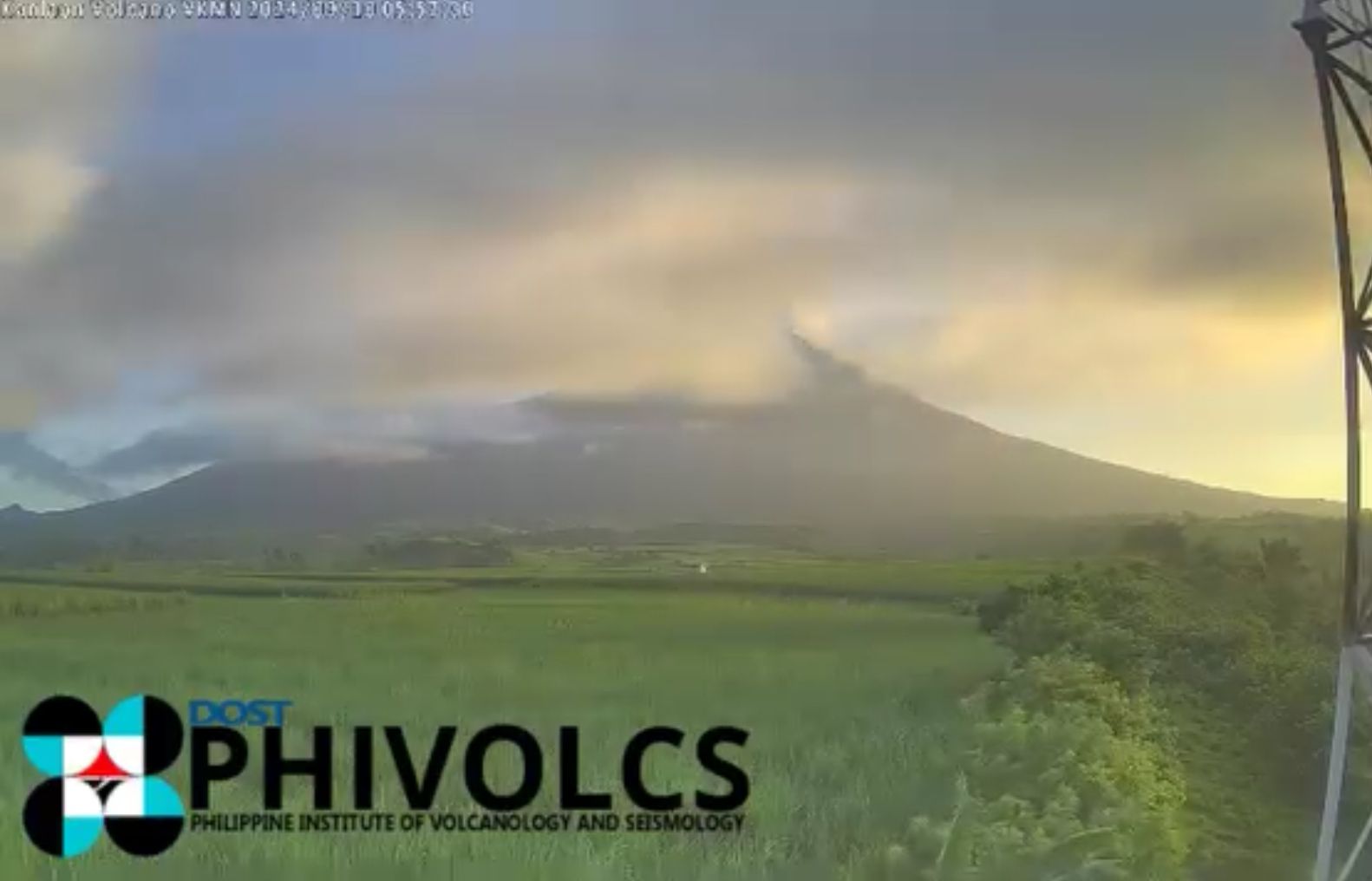Earthquake swarms, high volcanic gas emissions persist at Kanlaon
At A Glance
- Phivolcs detected 337 volcano-tectonic earthquakes over the past 24 hours as volcanic unrest persists, while gas flux increased to 9,985 tons on Sept. 10.
- Affected communities are advised to limit their exposure to SO2 by avoiding outdoor activities, staying indoors, and keeping doors and windows closed to block out volcanic gas.

The Philippine Institute of Volcanology and Seismology (Phivolcs) continued to monitor earthquake swarms and “unprecedented” sulfur dioxide (SO2) levels at Kanlaon Volcano on Wednesday, Sept. 11.
Phivolcs detected 337 volcano-tectonic earthquakes over the past 24 hours as volcanic unrest persists, while gas flux increased to 9,985 tons on Sept. 10.
Volcano tectonic earthquakes are caused by the movement of magma beneath the Earth’s surface.
A “voluminous” emission at Kanlaon Volcano also resulted in a 1,000-meter-tall plume that drifted southeast of the volcano.
This year, Phivolcs observed that Kanlaon had been degassing increased concentrations of volcanic SO2 at an average rate of 1,273 tons per day before the June 3 eruption.
Since then, emissions have been particularly elevated, averaging 3,468 tons daily.
Phivolcs warned that prolonged exposure to volcanic SO2, particularly for communities directly downwind of plume accumulation during low wind conditions, can irritate the eyes, throat, and respiratory tract.
Those especially sensitive include individuals with asthma, lung or heart conditions, as well as the elderly, pregnant women, and children, it said.
Phivolcs advised affected communities to limit their exposure by avoiding outdoor activities, staying indoors, and keeping doors and windows closed to block out volcanic gas.
To protect themselves, individuals should cover their noses with an N95 facemask if possible and drink plenty of water to alleviate throat irritation.
Those in particularly sensitive groups should monitor their health closely and seek medical help from a doctor or barangay health unit if serious symptoms occur.
Alert level upgrade possible
Phivolcs reminded the public that Alert Level 2 (increasing unrest) is currently in effect for Kanlaon Volcano.
However, the ongoing seismic activity raises the possibility of further unrest and a potential upgrade in the alert level, it added.
Residents are advised to remain vigilant and avoid entering the four-kilometer-radius permanent danger zone to minimize risks from volcanic hazards such as pyroclastic density currents, ballistic projectiles, and rockfalls.
In the event of ash fall affecting communities downwind of Kanlaon Volcano's crater, Phivolcs said individuals should cover their noses and mouths with a damp, clean cloth or dust mask.
Civil aviation authorities are asked to advise pilots to steer clear of the volcano summit to avoid hazards from ash and volcanic fragments.
Likewise, communities living near river systems on the southern and western slopes, especially those previously affected by lahars and muddy streamflows, are advised to take precautionary measures if heavy rainfall is anticipated or begins.